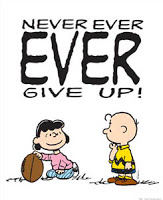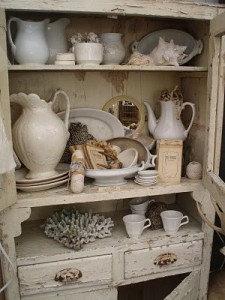Are you one of the (scientifically identified) 6 million people who avoids shredding your sensitive documents because of your home shredder. 5.9 million of that number have actually burned up at least one home shredder at some point. 5.8 million have burned up more than one. (I might have made those numbers up.) It might be twice that high. Most families should own a cross-cut personal shredder. They are actually very easy to keep in good shape.
Here’s help on how to use your home paper shredder.
If you follow these guidelines, your home shredder should do the job for many years. However, if you regularly have more than 2 shopping bags full of material to shred, you can search for free or low-cost community shredding events in your area. Just Google “shred events” and your city, zip code, or region. You can find a current list of shredding events in the greater Philadelphia region
You know we always hear “Everything has its Place.” It really does. Take a cluttered junk drawer filled with all kinds of mess. Often there are keys, batteries, receipts, tools, money, pens, gift cards, coupons, pencils, candy, stamps, unpaid bills, medicine, and restaurant menus having a conversation. You get the point. This happens when there is no designated area or system for these items. When we search for something and can’t find it, it affects our behavior and emotions. ![]() Yes, unfortunately here comes the yelling at the kids or running late for work because we can’t find the keys.
Yes, unfortunately here comes the yelling at the kids or running late for work because we can’t find the keys.
That is why drawer organizers are a great, efficient, and simple way to transform your space so everything has a proper spot. The goal is to find items when we need them. Imagine grabbing your keys and walking out the door on time for work. What a great feeling.
Here’s how to get started (once you’ve taken measurements and purchased your drawer organizers).
• Empty the cluttered drawer.
• Sort like items together — decide what you’ll keep and discard the rest.
• Take a look…no more clutter. Now grab those keys and go to work.
Happy organizing!
(Images of Organized Drawer owned by Carla Shipman aka Ms. DeClutter)

Now that the Super Bowl is over, wouldn’t it be great if you could pass the fun of football into the fun of organizing? Try following these game rules to motivate your household during your next home organizing project!
Huddle Up – Take on the role of Coach and gather the team (a.k.a. your family) on the couch. Get them running by warming up some Queso dip and letting the smells waft up to their rooms. You could even invite everyone to put on their favorite football jerseys.
Strategize – While you are munching, decide on a room to tackle, such as your living room. Make a plan; assign a specific task to each member of the team. For example, have the kids put their toys and games away while the adults go through the mail, sorting out the junk mail from the bills and other important papers.
Snap into Play – Set a timer for 15 minutes, which is a good amount of time to get a task done, or to work on a task without it being overwhelming. Coincidentally, it is also the length of time of a quarter in a football game! Then move on to another task for an additional 15 minutes.
Halftime – Time for a break and some entertainment! Have some snacks and drinks, play a board game, or watch a show that everyone will enjoy.
Snap into Play (again) – Repeat two more tasks, each lasting 15 minutes. If you are having fun and can’t seem to stop, just consider it as overtime!
Touchdown for the Win! – Congrats! You are the winning team! But just remember, whomever wins goes on to play another game — there is another room to organize in your near future!
 Happy New Year and Happy National Get Organized Month! I always set a few goals for myself and my business each New Year and organizing certainly plays a key role in accomplishing those goals. Over the years clients have asked for my assistance for many different reasons including New Year’s resolutions.
Happy New Year and Happy National Get Organized Month! I always set a few goals for myself and my business each New Year and organizing certainly plays a key role in accomplishing those goals. Over the years clients have asked for my assistance for many different reasons including New Year’s resolutions.
On the other hand, those resolutions are often derailed because “life happens.” Whether you are ready or not, you could lose your job, suffer through an illness, or deal with a divorce. You can’t always be prepared for the ups and downs of life, but being organized can help. Here are my ten organization basics to help you handle the uncertainties of life and achieve those pesky resolutions you are so adamant in keeping. Let’s break it down:
If it takes less than 60 seconds, do it! Whether it’s putting bills away, making a quick phone call, adding a number to your phone, sending a quick email, do it! Take seconds now or hours later.
A home for everything. Finding a home means you know where to put it when it gets misplaced and when you need it — it’s there!
Choose a time management tool. Use a day planner or smartphone to keep track of appointments, tasks lists, self-appointments, and vacation plans.
Keep lists. Use your time management tool for all lists: clothing, household items, food, gifts, etc. Keep sizes and dimensions on the list. Lists save time and money and no more buying things twice (you aren’t the only one).
Consolidate contact information. Gather mailing addresses, emails, and phone numbers and place them in your time management tool. No more little pieces of paper and sticky notes all over the place.
Convenience is the key. No digging and no searching. Place things where you use them; keep most-used items front and center — no pushing other things aside to get to what you need.
Focus! Small and large task completion requires focus. Break down any large task into smaller, manageable pieces and stay focused: one bite at a time.
Know what to eliminate. Surround yourself with tasks, events, and people who support your goals. Eliminate the rest and learn to say “no” (I have a handout on my website).
Consult the experts. Don’t reinvent the wheel; ask friends for recommendations and referrals; consult the Internet (but don’t believe everything you read); and then trust your judgment.
Maintenance! Things will get out of order (even in my home), so do a little each evening or once a week in order to keep it that way. Have respect for yourself, your time, and your home. Every time you put something away, it’s a gift to yourself.
Whether you are making resolutions are just trying to smooth out life’s bumps in the road, get organized! You’ll be glad you did.
Clutter Quote: “God takes care of the breath of your life; it is your responsibility to take care of the depth of your life.” Unknown
 As you anticipate watching the ball drop in Times Square on New Year’s Eve, why not use these last days of 2013 to start your own countdown to the New Year? If clutter’s been an issue, here’s a countdown that will help you shake off the dust of the past so you can embrace the promise of the future. Ready? Here we go:
As you anticipate watching the ball drop in Times Square on New Year’s Eve, why not use these last days of 2013 to start your own countdown to the New Year? If clutter’s been an issue, here’s a countdown that will help you shake off the dust of the past so you can embrace the promise of the future. Ready? Here we go:
10! De-clutter your family room – Choose ten catalogues or magazines to recycle.
9! Lighten up your bookshelves – Select nine books to donate to your local library.
8! Make room for your new holiday clothes – Go through your closets and drawers to see what you still love and what still fits. Remove eight articles of clothing to donate to your local Good Will Store.
7! Unburden over-stuffed cupboards – Remove seven old, broken, or mismatched mugs, glasses and plastic cups.
6! Manage a messy ‘junk drawer’ – Recycle or toss six items: old pens, dried up white out, and unknown stray parts that have been there for too long.
5! Streamline your pantry – Remove five food items: throw out any food past its expiration date and find something you could donate to a church or local food bank.
4! Freshen up your sock drawer – Remove four pairs of socks that have holes, worn-out elastic or that you no longer like to wear.
3! Reduce bathroom clutter – Discard three toiletry items that are expired or used up.
2! Clean out your jewelry case – Find two pieces of broken jewelry like mismatched earrings or broken chains, which you can discard or bring to have repaired.
1! Reclaim lost counter space in your kitchen – Remove one large item that you do not use daily such as an appliance or basket that’s serving no useful purpose. Store it away or donate it if you no longer need it.
I raise a glass to you – here’s to a healthy, happy, and organized New Year!
 Are you ready to downsize? Do you get stuck when trying to let go of items to which you have a sentimental attachment? Well, here are some tips to help you move forward:
Are you ready to downsize? Do you get stuck when trying to let go of items to which you have a sentimental attachment? Well, here are some tips to help you move forward:
HAVE A TREASURE HUNT
Consider the process of downsizing a treasure hunt. You’ve collected and inherited a plethora of items, now it’s time to select your treasures and let go of the rest.
USE MEMORY TRIGGERS
Ask yourself if you have other items that can serve as better memory triggers. For example, could you let go of brochures or souvenirs from travels because you have photos of the trip? Could you let go of Grandma’s broken sewing machine because you have her pearls? Another great option is to photograph items to preserve your memories, then release what you don’t use or love.
THE HEAD VS. HEART APPROACH
Let your storage space dictate how many of a category you will keep. You might decide that one shelf in your closet is practical to store your vases. If you have more than will fit that space, let go of your least favorite or seldom used ones.
Consider using numbers to help keep you logical, rather than emotional. For example, ask yourself how many of a specific item seems practical to keep. Four black purses seems generous. You have nine. Let go of five of your least favorite ones.
THE JOY FACTOR
Another way numbers help is by using The Joy Factor. Use a scale of 1 to 5, with 5 meaning ‘great joy‘ and 1 meaning ‘not so much’. Now, ask yourself where on the scale an items falls. If you want to downsize in a big way — you might keep only 5’s as these are your treasures.
PLEASE DON’T TOUCH!
Some people find that holding and touching an item greatly increases their attachment. If that’s you, you’ll want to have a friend, family member, or professional organizer help you. Have the other person hold up items so you can say “yay” or “nay.”
Letting go can be hard, but I assure you that the results will be well worth the effort. Living in a clutter-free environment promotes clarity, focus, peace and happiness.
What items do you find hold the most sentimental attachment?